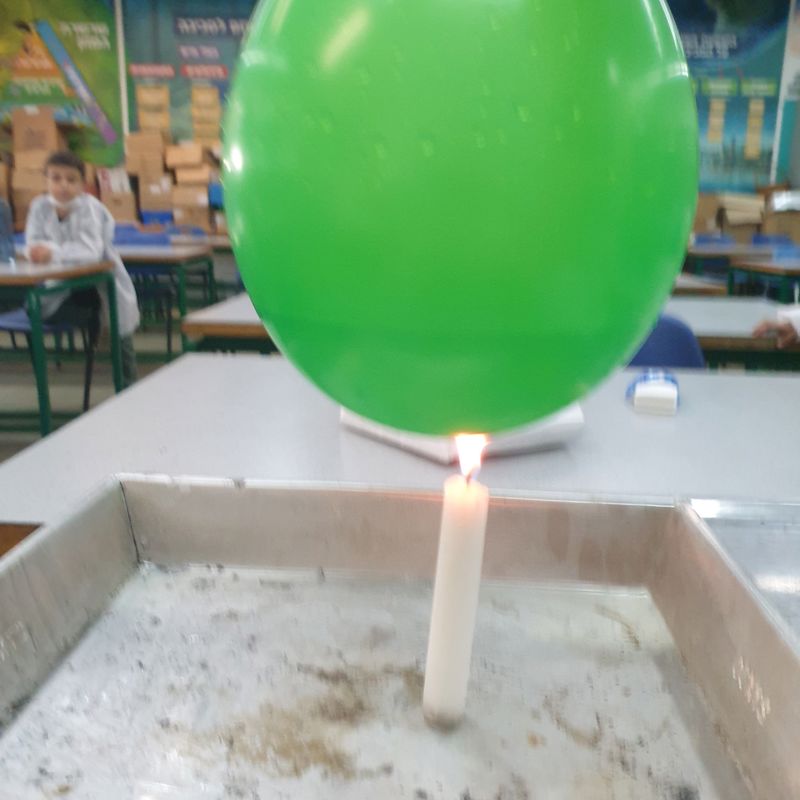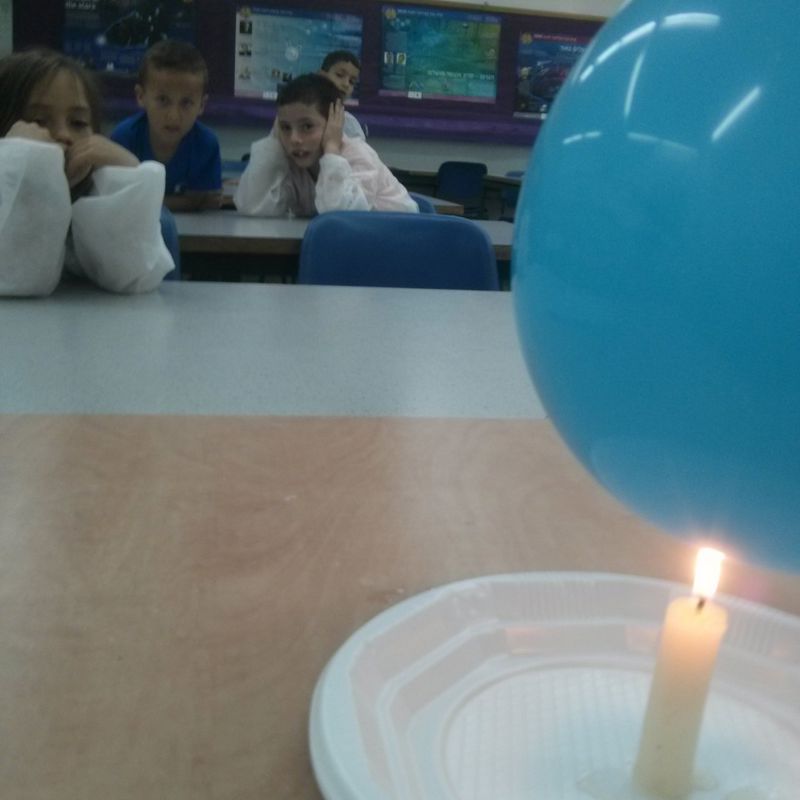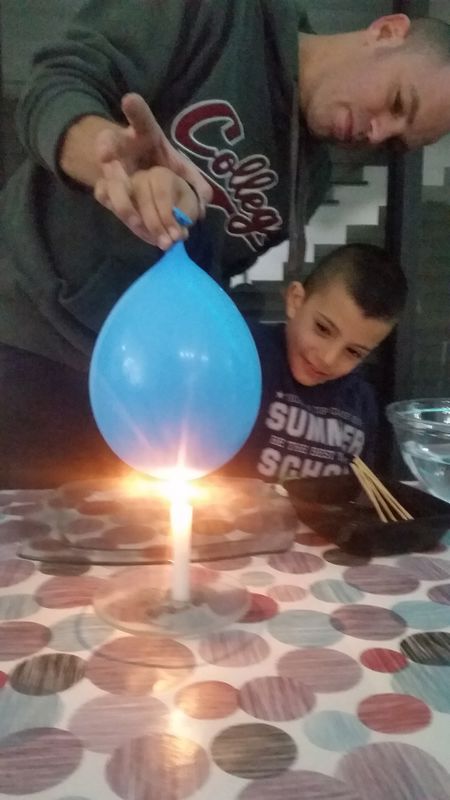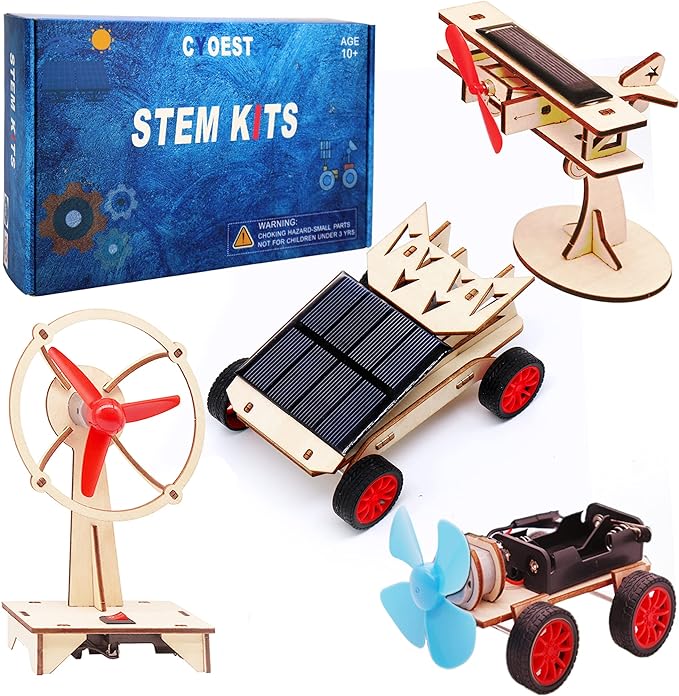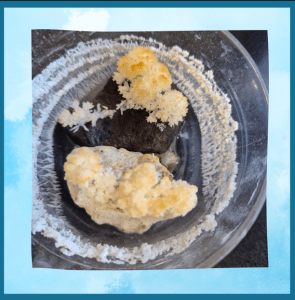Balloon on fire
Witness the intriguing effects of water and fire in a controlled environment. Join me as we delve into the chemistry of this captivating experiment, understanding the factors that prvent a balloon fom bursting into flames. The balloon on fire experiment will surprise everyone!
What you need:
- A balloon
- Water
- A Candle and matches.
What to do?
· Pour
some water into the balloon.
· Blow up
the balloon and tie it.
· Light
the candle.
· place
the balloon over the candle.
the balloon will not pop!
If you love baloon experiments, make sure you check out the Balloon tumbler and the Balloon on a skewer fun experiments!
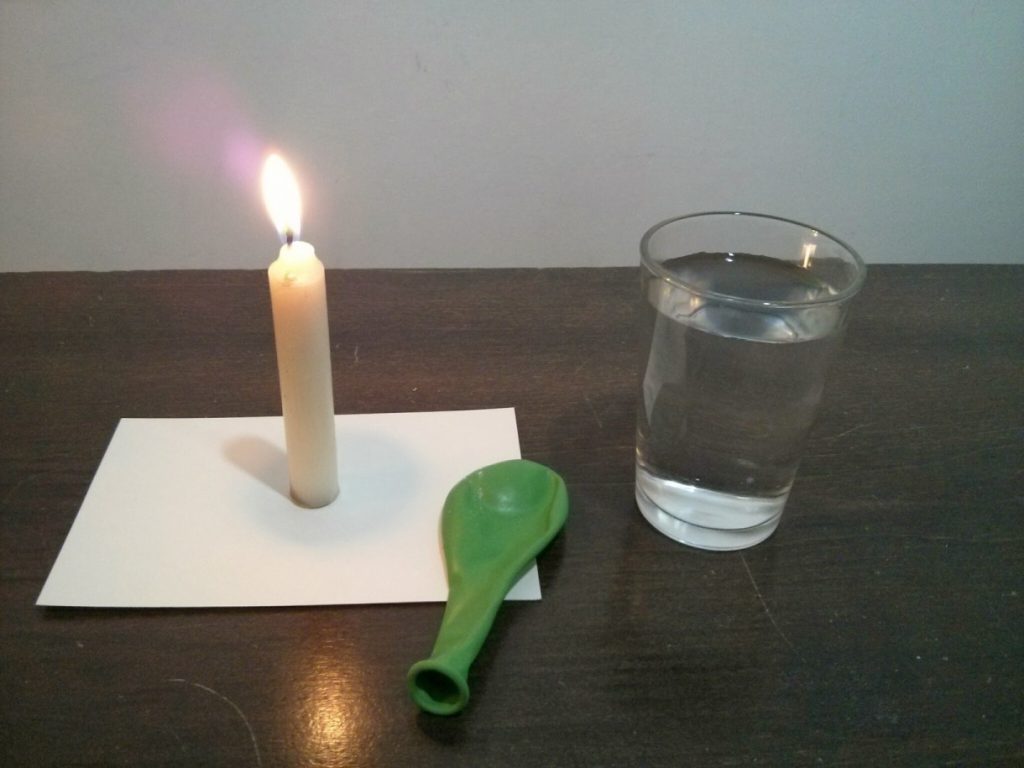
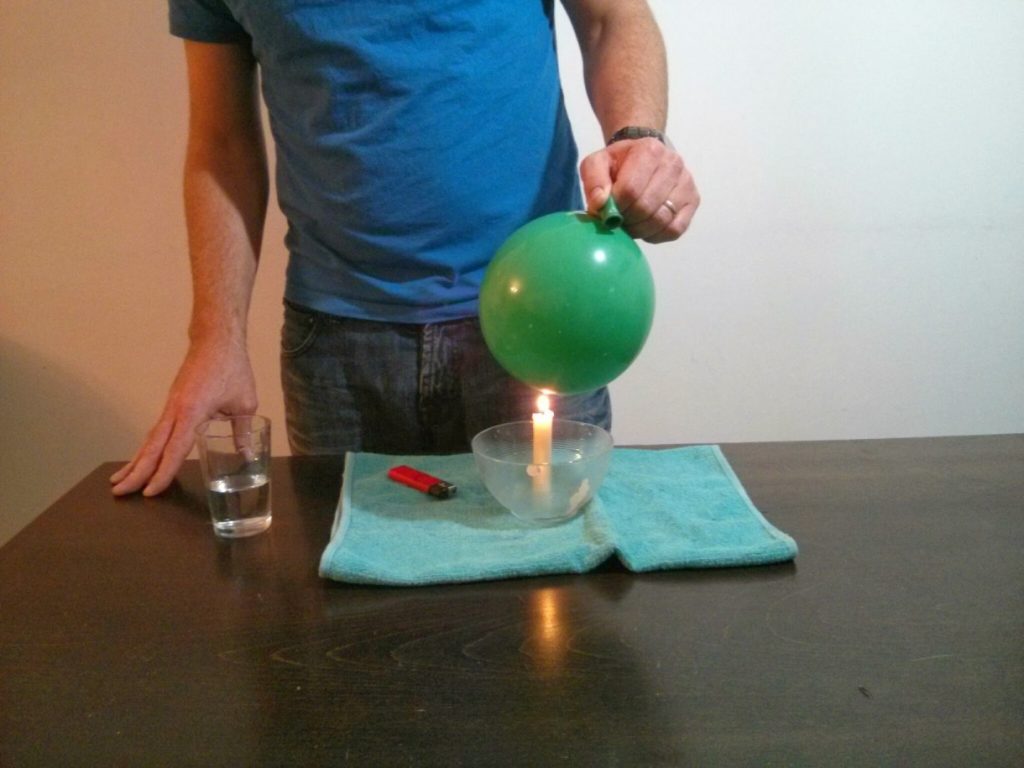
What is happening?
For the balloon to burn, the rubber must reach a certain temperature at which it ignites and pop. This temperature is higher than the temperature at which water boils. When we place the balloon over the fire, the heat is distributed between the balloon and the water and heats both, in fact the water absorbs most of the heat from the balloon that meets the fire. As long as there is water in the balloon, the temperature will not exceed 100 degrees Celsius (which is the boiling point of water). Additional heating will not cause the temperature in the balloon to rise but will be used to turn the water into steam. And so if there is enough water in the balloon it will not burn.
Another balloon experiment you might love is the balloon on a skewer!
We’d love to showcase your creativity!
Share pictures of your experiments with us, and together, we can inspire young scientists everywhere!
